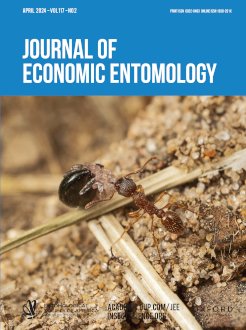Division of labor within a honey bee colony creates a codependence between bees performing different tasks. The most obvious example of this is between the reproductive queen and worker bees. Queen bees lay 1,000 or more eggs a day, while young worker bees tend and feed queens. Young workers and queens can be exposed to pesticides when foragers return to the hive with contaminated resources. Previous research has found negative effects of larval exposure to insect-growth disruptors (IGD) methoxyfenozide and pyriproxyfen, on adult responsiveness to artificial queen pheromone. The present work investigates potential physiological and molecular mechanisms underpinning this behavioral change by examining the development of hypopharyngeal glands and ovaries as well as the expression of genes related to reproduction and worker endocrine signaling in the brain and hypopharyngeal gland tissues. Though hypopharyngeal gland and ovary development were not altered by developmental exposure to IGDs, gene expression differed. Specifically, in the brain tissue, ilp1 was downregulated in bees exposed to pyriproxyfen during development, and Kr-h1 was downregulated in both methoxyfenozide- and pyriproxyfen-exposed bees. In the hypopharyngeal glands, Kr-h1, EcR-A, EcR-B, and E75 were upregulated in honey bees exposed to methoxyfenozide compared to those in the pyriproxyfen or control treatments. Here we discuss these results and their potential implications for the health and performance of honey bee colonies.
How to translate text using browser tools
30 January 2024
Developmental exposure to hormone-mimicking insect growth disruptors alters expression of endocrine-related genes in worker honey bee (Hymenoptera: Apidae) brains and hypopharyngeal glands
Eliza M. Litsey,
Julia D. Fine
ACCESS THE FULL ARTICLE
It is not available for individual sale.
This article is only available to subscribers.
It is not available for individual sale.
It is not available for individual sale.

Journal of Economic Entomology
Vol. 117 • No. 2
April 2024
Vol. 117 • No. 2
April 2024
ecdysteroid
juvenile hormone
Krüppel homolog
methoxyfenozide
pyriproxyfen





